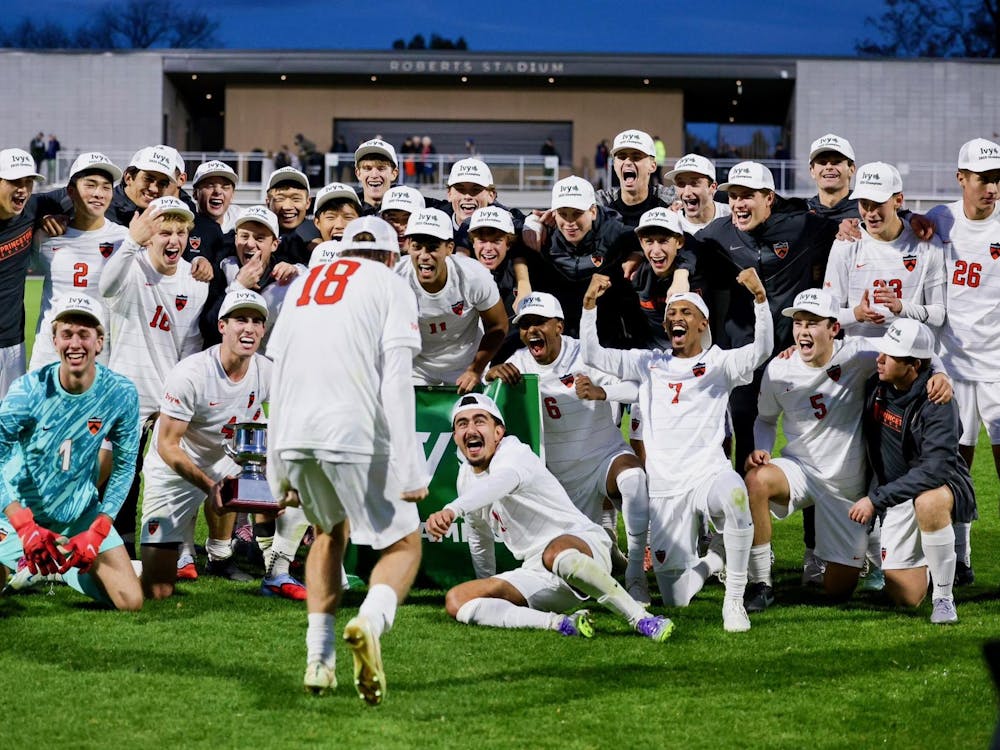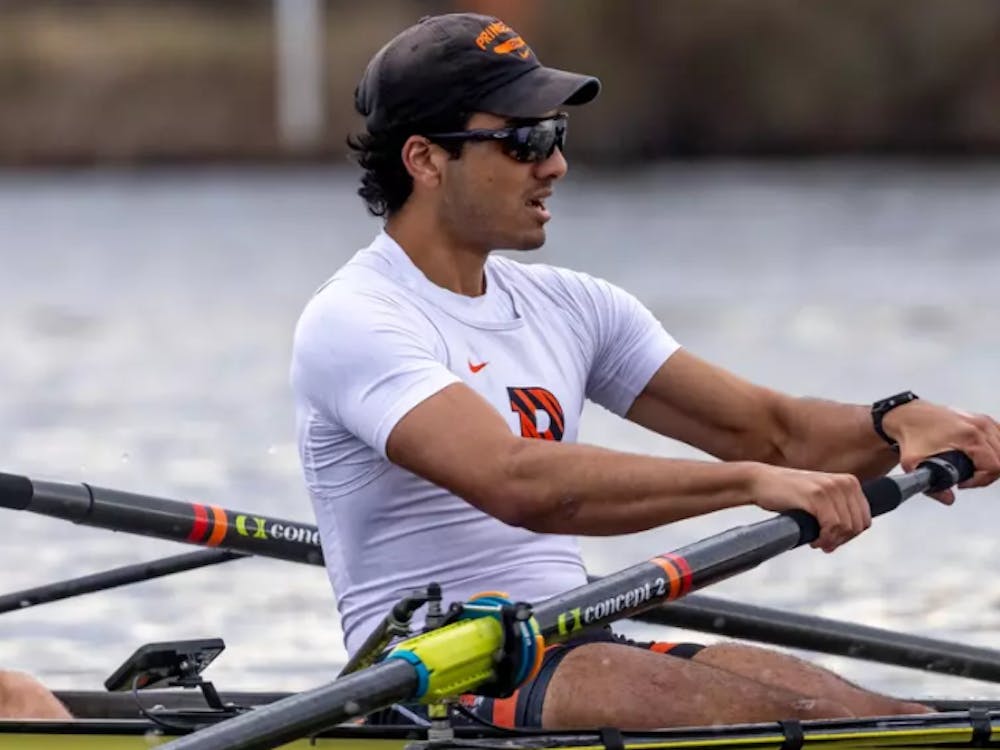Believe it or not, Chuck Norris did not invent the roundhouse kick to the face. It was made famous by Korean taekwondo. Princeton’s own Chuck Norrises, members of the taekwondo team, spend much of their time in the Dillon Gymnasium Multipurpose Room.
The taekwondo team was founded in 1986 for students of all skill levels. No experience is required to join the group, as beginner classes are offered every fall and new members are always welcome. In addition to offering classes for beginners, the team participates in tournaments for all different levels of ability.
“The community on the team is better than many other sports,” former president and senior Marc Osherson said.
Taekwondo tournaments are divided into two categories: forms and sparring. Sparring is what you see in the Olympics — two people fighting in an 8-meter-by-8-meter arena. The competitors score points by recording blows to the body and to the head. One point is scored for a hit to the body that causes the opponent to move backward. Two points are gained if a Karate Kid-style spinning technique (including back kicks) is used in an attack. Three points are scored for a hit to the head. Naturally, fighters wear headgear to protect against concussions, but even with protection, blows to the head can still pack some punch.
The fighters go at it for three rounds of two minutes each, and the fighter with the largest point total after all three rounds is declared the winner. If the two are tied after the full three rounds, a sudden-death fourth round is used to decide the winner. A knockout, while extremely rare, ends the match regardless of the round, giving the win to the last competitor standing. Unlike in boxing, though, knockouts are fairly rare in taekwondo.
Forms, a different type of taekwondo, is a different creature altogether and is more about the art of taekwondo than the fighting itself. There are no forms competitions at the Olympics as of yet, unlike sparring. In forms, the entrants memorize a specific set of moves and perform them in front of judges. They are graded as in figure skating or gymnastics. Additionally, there are also team form events in which two or more competitors must perform synchronized sets of moves with exacting precision.
“The scoring system in forms is very similar to that of diving, gymnastics or figure skating,” head coach Rex Hatfield said.
The team competes in the Eastern Collegiate Taekwondo Conference alongside 29 other teams. The conference is divided into three divisions, based on relative size and strength of the teams. Over the course of the year, the ECTC sponsors five tournaments, which any number of competitors from each team can enter. Each team earns points for finishing in first, second or third place in the various categories.
The total number of points earned in a season determines which division teams are placed in for the next year — Division I is reserved for those teams that gain more than 1,000 points in a year. Historically, this distinction has been reserved for Cornell and the Massachusetts Institute of Technology, as those schools have mandatory physical education requirements and offer martial arts classes. Division II schools score more than 150 points in a year, while any teams scoring fewer than 150 points is placed in Division III.
Currently, Princeton is in Division II, having just missed qualifying for Division I next year. The team totaled 829 points on the season and won Division II outright.
In the past few years, though, the team has been building up its power. When Osherson, a third-degree black belt, joined as a freshman in the fall of 2006, the team was still in Division III.
“When I joined, we were not very good,” he said. “We had some individual talent, but we never medaled.”

In the past few years, the club has grown tremendously, and Osherson sees this year as the culmination of a large team effort. President and junior Carissa Fu, a third-degree black belt who won a gold medal at last year’s collegiate national championship in forms, agreed.
“The club has grown and improved,” Fu said. “We’ve become a formidable opponent in our league.”
In November, Princeton hosted a tournament for the first time since 2005. The team will send a significant number of participants to Denver next weekend for the 35th annual National Collegiate Taekwondo Championships. Fu and Osherson hope to medal in sparring and forms, as well as in the joint forms event. Last year, they each brought home a bronze medal in their sparring divisions. In sparring, each division — which is determined by belt or, for black belts, by weight class — has its own bracket, which is structured under a single-elimination format until the quarterfinals. After that point, the format shifts to double elimination.
While theoretically anyone can enter the national tournament, the team limits itself to bringing only those who it thinks can handle the intense physicality of the competition, as there is a significant risk of injury in top competition. Winners at nationals in the eight black belt weight classes can advance to the World University Taekwondo Championships, which will be held in Vigo, Spain, this year.
Rex Hatfield is the informal coach and mentor of the team and a fifth-degree black belt who works during the day in Firestone Library as a librarian and German Studies specialist. A soft-spoken leader who nonetheless commands respect on the team, Hatfield has been working with the team ever since he has been at Princeton — nearly 20 years. While he was previously paid to teach martial arts classes, Hatfield has never received money for his many hours spent with the team. His dedication to the team seems to be reflected among its members as well.
“I try to get them the base they need,” Hatfield said. “It’s interesting to see how they do.”
Hatfield started taekwondo in college as well, and he credited it with helping him to adjust to university life.
“[Taekwondo] just made college life a lot easier for me,” he said.
This is part of a weekly series on club sports at Princeton.







